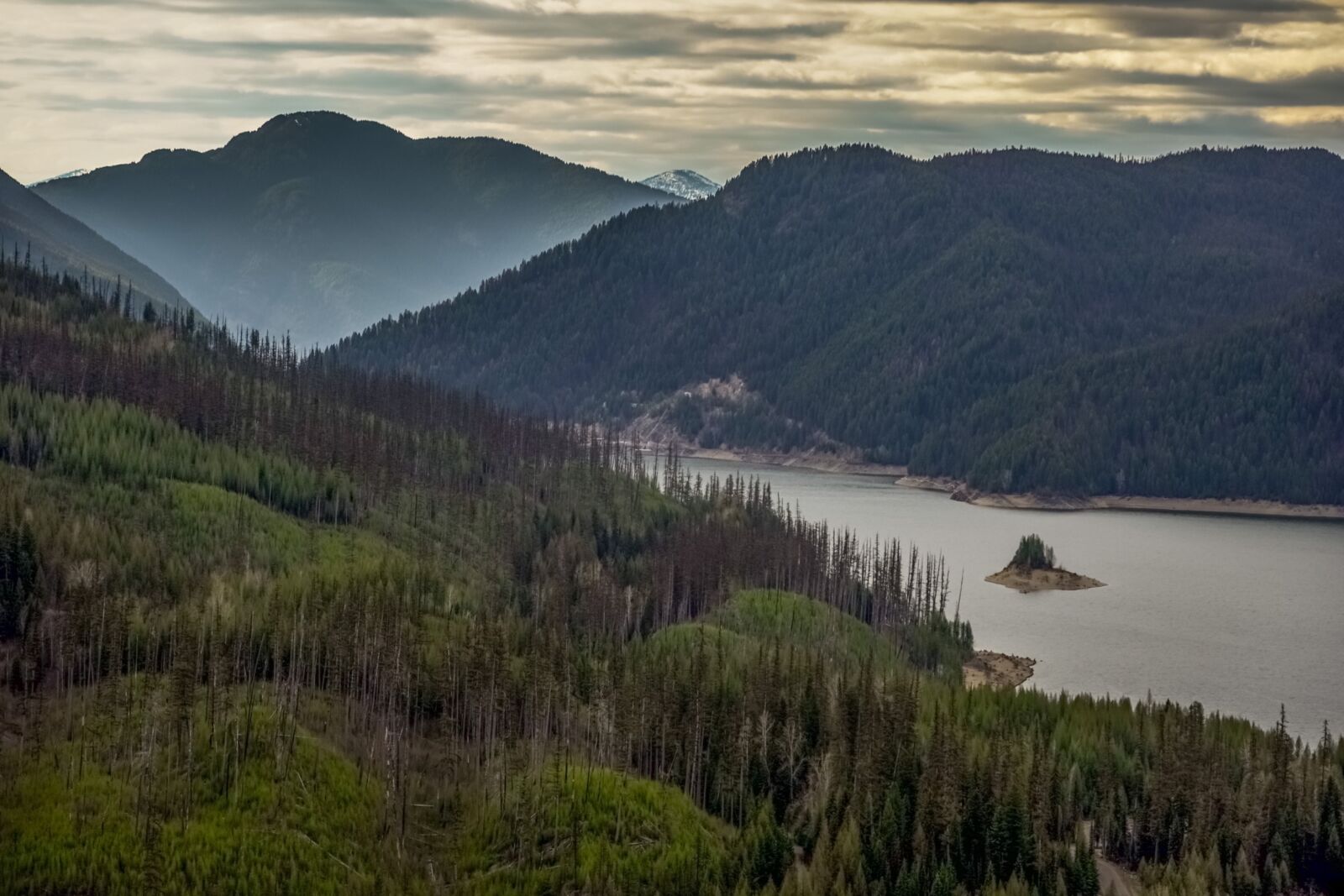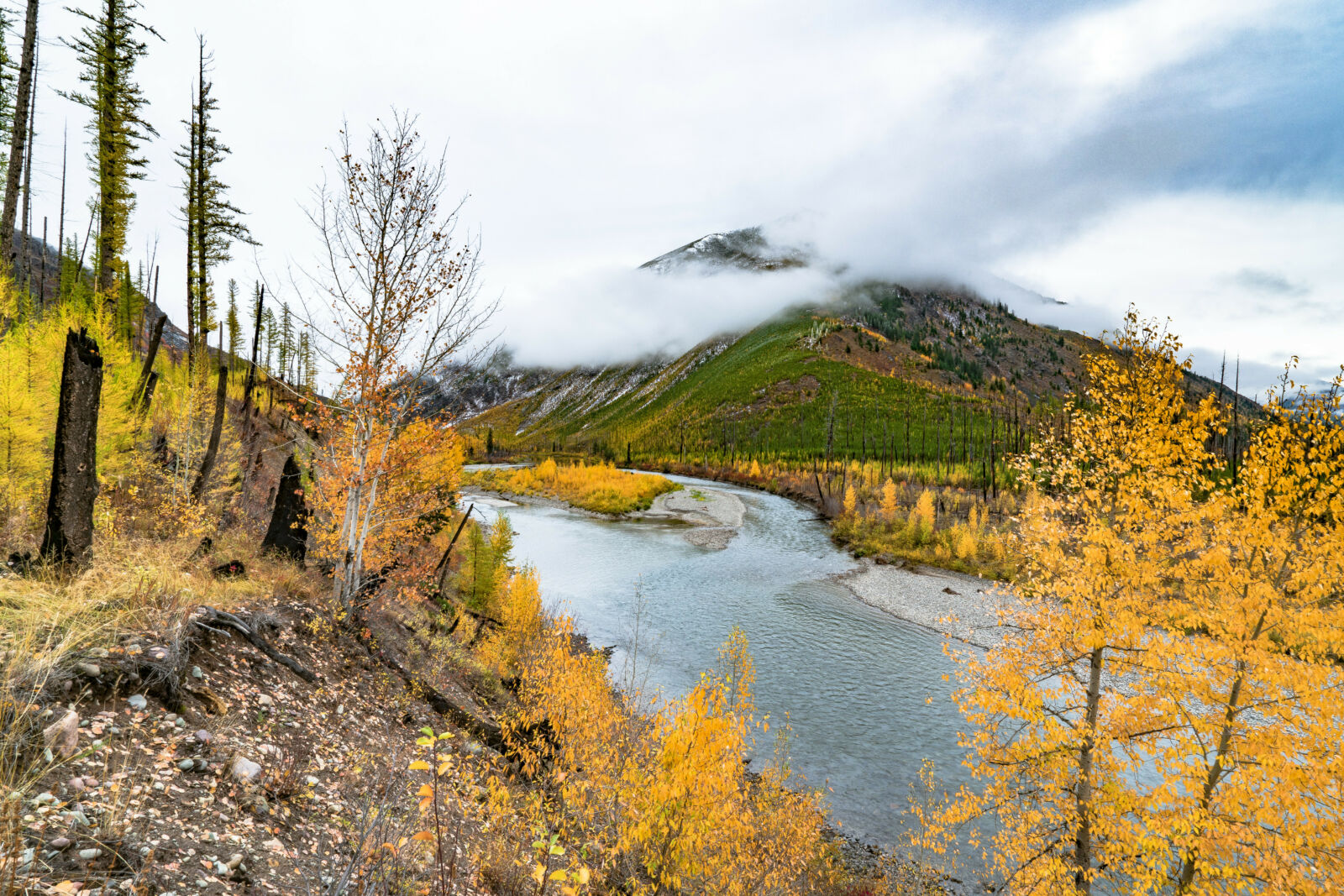With support from the State of Montana’s Tourism Department, the National Forest Foundation is working with the Spotted Bear Ranger District of the Flathead National Forest to breathe new life into the Historic Spotted Bear Museum.
Constructed in 1923 and listed on the National Register of Historic Places, the Spotted Bear Museum is one of the Flathead National Forest’s most significant heritage assets. Both the building and location hold remarkable stories.
Unfortunately, due to a lack of staffing, security, and the need for updated displays, the museum remains closed most of the time; only opened upon request if a staff person from the Ranger Station is available to provide a tour. The NFF is working with the Flathead National Forest to create a more welcoming museum space and preserve a piece of Montana’s unique wilderness character.

Flathead National Forest. Photo by Joshua Lewis.
Located at the gateway of the Bob Marshall Wilderness Complex – the third largest Wilderness Complex in the lower 48 – and with a history dating back to the early 1900s, the Spotted Bear Ranger District has a rich and unique history of early backcountry use, wilderness exploration, and innovation. Although the creation of the Bob Marshall Wilderness Complex officially began in 1931 with the creation of the South Fork Primitive Area, 1910 is perhaps the first year that the Forest began to make history.
After the expansive 1910 forest fires, the Forest Service realized the need for better backcountry communication and undertook phone line construction. The Spotted Bear Ranger Station was the heart of the telephone system; five lines terminated there, from Swan Lake, Kalispell, Big Prairie, Three Forks, and the Spotted Bear Lookout. Forty miles of phone line from Danaher Cabin to Black Bear Cabin is still functional today. To this date, Spotted Bear continues to maintain the longest Forest Service phone line in the country.

Flathead National Forest. Photo by the U.S. Forest Service.
Spotted Bear also historically utilized several backcountry airstrips to maintain access to and communication with backcountry stations. These airstrips were regularly used for fire control, supply, and emergencies. Spotted Bear currently has three public airstrips: Spotted Bear, Meadow Creek, and Schafer Meadows. The Schafer airstrip, which was included as an exception in the Great Bear Wilderness designation, is the only Wilderness airstrip in the country. It is primarily used by the public for recreational visits. Check out this short video on these unique properties and the backcountry skills still in use today visit:
This summer, the Ranger Station will reopen to the public, offering self-guided tours that showcase the area’s storied history in the early days of Wilderness management. Updates to the Museum include improved signage and displays for self-guided tours and a new heating system. This work complements previous building maintenance and restoration work completed by the Forest Service to maintain the building’s historic character and make it safe for public use.
Photo by the U.S. Forest Service.
--------
Every day, the NFF works to help make our forests – and the experiences people have on them – relevant to ALL Americans. We tell stories, highlight historical contributions of all peoples, explore forgotten legacies, and much more. This growing part of our mission requires unrestricted support from people like you. Will you join us today? ay? It’s easy: just click here and offer your support. We thank you!

